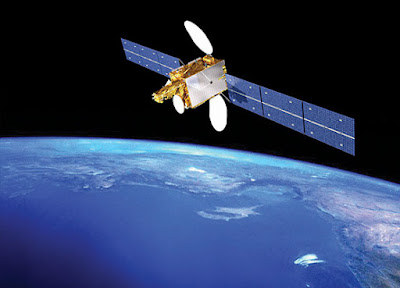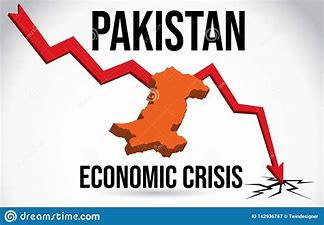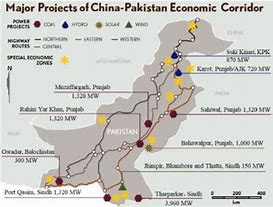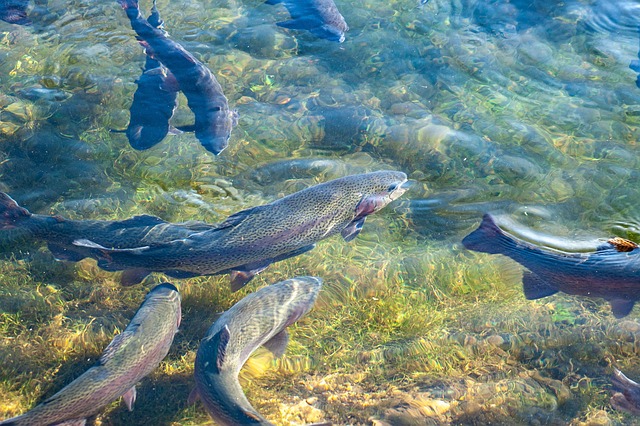Space Program is an economic opportunity for the developing world. Outer space is the future home for humans. It has a great occasion for every industry and business to grow on Mars and Moon. Economic investigations have a lot to articulate about the behaviours a government employs its assets to follow that enthusiasm for the space program and how it classifies the agenda that represent their needs. No research has sought to determine the state prominence, geopolitical authority, or increase of the worth of our perceptive of the astrophysical structure and other space sciences, subtle settlement, that have lots of involvement with space studies. To disregard these subtle principles may be due to undervaluing the compensations of space actions. Macauley recommended a better exercise of conditional evaluation in 2004. This method utilizes analysis of community attitude about the importance of commodities or settlements for which there is no marketplace. Ecological researchers frequently exercise it to analyze the importance of the community attitude.
Related evaluation of the diverse challenging targets of the space program could channel administrators as they covenant with the rising pressure between demands for liability in the use of tax collections and the autonomy approved, the space program for the benefit of science, technology, and other gains for public wellbeing. The governments require a transparent and balanced approach to considering space actions alongside other public liabilities. Complementary expenses and reimbursements, plus subtle compensations are compulsory that ought to report to discussions. We will discuss different aspects; of how the space program can initiate economic activity.
Military, Defense and Strategic Forces:
Space is considered the fourth medium of military operation in modern days primarily after the Iraq war. Future confrontations would be faced and solved in outer space. The militarization of space has become more reflective. The first-ever space conflict is emerging between China and USA. Many reimbursements can be achieved for national defence by utilising space and satellites. It can improve the defence of a state, and it is a power multiplier against the old practices. The satellite can be very supportive of weather forecasts and advanced technological communications. These can be deployed to coordinate different actions and conduct military operations. The intelligence movement and excellence are also the products of the development of space technology. Satellites can have a hopeful impact during war fares, deployment of war troops and warfighting potentials. Satellites are very efficient for the Naval and Air forces for the deployment of ships and jets. The recent war operations depend upon the satellites. In military actions, the sign intelligence and telecommunication system are very efficient. Meteorology is also imperative in conventional war fighting for the weather forecast. Military space programs are supportive of evaluating the threats and issue cautions and warnings. Radar and sensors are attached to the satellite system for more effectiveness.
Satellite plays a vital role in both strategic and military operations. It presents stats in operation spots about the potency of the military and for reviewing the damage due to war by providing the target information. It can also be helpful to deploy logistic support to the troops in the war regions. The implication of the satellite on the strategic forces is to guide the missile exactly pinpoint the target. The space surveillance system is significant for strategic armies, especially for conflicting nations.
Technology Developments:
Originators regularly come across for occasions to generate solutions to problems. More industrialists can now appear; how to unravel the urge of space travel by facilitating the public to land and arrival back on our planet. Suppose modern-day professionals could think to craft more technologies for sustainable space agricultural produce. After all, we will require more vegetables, fruits and grains if we are to prosper in space. We can cultivate fertile plantations for increased food requirements. NASA’s Vegetable Production System is already producing development in this part. Multiple fueling stations are required because skyrockets need the energy to complete a trip from one outpost to the next.
Academia:
Many institutions for higher education propose an aerospace engineering program, which principally educates trainees about proposals and progress of aeronautical and aerospace automobiles. But if we are to fabricate an outpost in space, the scholarly society may require to develop its program and to train learners about construction structures for houses and buildings on Mars and Moon. It might involve research on how to either transport materials available on Mars or renovate them into construction equipment or how to build tremendously lightweight structural materials on Earth and easily transport them to Mars. Archinaut is already working on building large structures in space.
Space Travel Agencies:
Nowadays, the public, who is not an astronaut, has to be a billionaire or millionaire to take a trip to space, as established by the three travellers who are paying $55 million each to spend eight days at the International Space Station. It was a historic moment as a private-public space mission. However, if space tour achieves fame, industries could offer deals on space tour. They can offer analysis or attach enjoyable activities to perform in space.
The Media:
If more corporations and associations divert their focus to the space industry, we can observe more journals about space. Many media reporters who want to discover this area will get employed. It will also open up opportunities for innovators to develop into skilled analysts in the space market.
Internet and other Facilities:
Many companies can grow by providing internet and other services to space communities. How will they set up their service stations? Will they require the same cables and other gadgets to provide such services, or do they need some improved equipment?
Fitness industry:
The public will have to outline how to optimize the behaviours we prevail over numerous issues in space and how to make oxygen to design life-saving conveniences like pharmacies and hospitals. Until then, tech groups could supply them with wearable kits to supervise and sustain their fitness during the space travel phase. We consider it a prospect for tech groups to consider; how smart gadgets could be influential to track fitness records in space, examining statistics in real time and creating life-saving verdicts.
Fashion Industry:
Renowned designers and fashion industrialists are building space dresses for space travellers. As we outline for more profitable travels to space, clothing manufacturing has a great chance to accelerate and generate stylish space dresses for travellers. They can work in partnership with tech groups and fashion experts to devise protected outfits for everyone. Especial foot wears for space travellers can also be a huge industry. Travellers may crave elegant and comfortable shoes to put on in space. Other dressing-related articles specially designed for space missions can also be an enormous business opportunity.
Space Program of Pakistan
There are five chief space actors. They are the USA, Russia, China, Japan and India. The percentage of GDP of India on its space program is second in the world, just after the United States. India pursues assistance for its space program from USA, Russia and Israel, while Pakistan gets facilitated by China. Pakistan is of major concern for the world because it is the nuclear weapon state in the region. Korea is also coming into the space race with the cooperation of Russia. India’s space program is well established and has an assembled range of military space capabilities.
Pakistan’s progress is low compared to India’s. The technological advancement of the atomic energy and space program is of major concern for both countries, India and Pakistan, as it has important aspects in the regional strategic balance.
The Space Program 2040 is a satellite development and startup plan of Pakistan’s space research authority. It is expected to launch five geostationary communication satellites and six low-Earth orbit satellites. Pakistan space program established Pakistan Space and Upper Atmosphere Research Commission (SUPARCO) in 1961. There is a ground station for the satellite SUPARCO in Rawat near Islamabad. It is the only research institute of its type in Pakistan. It has two institutions in Karachi and Islamabad. They provide education to their workers about aerospace, communication systems, and material engineering and sciences. It puts forward special courses on bachelor’s and master’s levels in the Institute of Space Technology. SUPARCO has been managing and hosting many Soviet-Russian COSPAS-SARSAT satellites since 1990. Pakistan is also a member of the Asia-Pacific Space Cooperation Organization (APSCO).
SUPARCO and the Department of Space have marked legal memorandum of understanding agreements with several foreign political entities. SUPARCO has had a program of satellite remote sensing for the last forty years.
Pakistan launched its satellite Badr1 from China in 1990 and its first geostationary satellite from Pakistan in 2002. Badr1 is developed for the environmental department, wheatear forecasting and other objectives for peaceful purposes. Pakistan launched another satellite Badr2, in 2001. It was the Earth surveillance satellite, and it is a milestone towards the creation of more satellites. Pakistan’s first geostationary satellite PAKSAT1 was launched in 2002. It is more competent than the previous satellites and its life is about eight to ten years. PAKSAT1-R replaced the previous satellite with a new satellite with advanced characteristics in 2011. India started its space technology program in 1963 with the making of the Thumba Equatorial Rocket Station. India has achieved a lot of improvement in space technology. It is positioned among the 6th in the world. With the rapid growth of India, it might be the leading space authority shortly.
Pakistan can plan an association to build different institutes and space research centres like BAE to augment investments in the space program. BEA is mounting data, quantifying the assistance of space-related industries for the whole American nation. These statistics provide industry leaders, legislators, and the community with a new device to investigate the space economy and update investment choices. Pakistan should raise its financial resources for the space program. IST (Institute of Space Technology) is a significant institution towards professional training and development of human resources for the space program. More institutes need the hour so they can provide efficient manpower for the space program of Pakistan. Pakistan has been availing of all potential actions to offset Indian comparative advantage in space technology. India and Pakistan’s balance of space technology is imperative for stability in South Asia. SUPARCO participated in the Global Space Congress for the first time, held in Abu Dhabi in March 2019.
Global Alliance
Global Alliance assists agreements across the global space ecosystem, related businesses, tutoring and governments to unlock discussions and cooperative agendas. Global Alliance connects with embassies, viable ventures, regional space organizations, educational foundations, accelerators, innovators, trade organizations, and financial contributors and corporations all over the globe (Symposium 365). Global Alliance functions out of Washington to connect, cooperate and confer regularly with U.S. congressional members and policy advisors. It offers numerous programs to train policymakers about complex space issues. These issues need to be tackled so that the space economy becomes an efficient tool for the development of nations. They state, “We use resources to educate decision-makers and congressional staff on civil, commercial, and critical national security space policy issues. We facilitate and coordinate with officials from government, industry, academia and the international space community. We serve as a trusted source of information and data for these constituents and promote the message that investment in space capabilities benefits all people and that America must remain the leader in space. We offer unpaid research and government affairs internships to students during the spring, summer, and fall semesters. We accept applications on a rolling basis”.









3 Comments